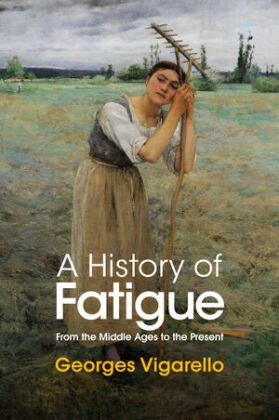
A History of Fatigue - From the Middle Ages to the Present
| Verlag | Wiley & Sons |
| Auflage | 2022 |
| Seiten | 424 |
| Format | 24,0 x 1,2 x 25,4 cm |
| Gewicht | 798 g |
| Artikeltyp | Englisches Buch |
| EAN | 9781509549252 |
| Bestell-Nr | 50954925UA |
"Stress," "burn out," "mental overload": the twentieth and twenty-first centuries have witnessed an unrelenting expansion of the meaning of fatigue. The tentacles of exhaustion insinuated themselves into every aspect of our lives, from the workplace to the home, from our relationships with friends and family to the most intimate aspects of our lives. All around us are the signs of a "burn-out society," a society in which fatigue has become the norm. How did this happen?
This pioneering book explores the rich and little-known history of fatigue from the Middle Ages to the present. Vigarello shows that our understanding of fatigue, the words used to describe it, and the symptoms and explanations of it have varied greatly over time, reflecting changing social mores and broader aspects of social and political life. He argues that the increased autonomy of people in Western societies (whether genuine or assumed), the positing of a more individualized self, and the ever expa nding ideal of independence and freedom have constantly made it more difficult for us to withstand anything that constrains or limits us. This painful contradiction causes weariness as well as dissatisfaction. Fatigue spreads and becomes stronger, imperceptibly permeating everything, seeping into ordinary moments and unexpected places.
Ranging from the history of war, religion and work to the history of the body, the senses and intimacy, this history of fatigue shows how something that seems permanently centered in our bodies has, over the course of centuries, also been ingrained in our minds, in the end affecting the innermost aspects of the self.
Inhaltsverzeichnis:
Acknowledgements
Introduction
Part I: The Medieval World and the Challenge of Landmarks
Chapter 1: A Clear Picture with Cloudy Landmarks
Chapter 2: The Renowned Fatigue of the Warrior
Chapter 3: The 'Necessary' Suffering of the Traveler
Chapter 4: 'Redemptive' Fatigue
Chapter 5: Ordinary Work and Everyday Workers, a relative "silence"?
Chapter 6: Between Occult Power and the Healing Virtues of Refreshments
Part II: The Modern World and the Challenge of Categories
Chapter 7: The Invention of Degrees
Chapter 8: Inventing Categories
Chapter 9: The Advent of Numbers
Chapter 10: Diversifying Influences
Chapter 11: The Diversification of Remedies
Chapter 12: Poverty and "Exhaustion"
Part III: The Enlightenment and the Challenge of the Perceptible
Chapter 13: Feelings at Stake
Chapter 14: Nerves: From a Stimulus to a Whirlwind
Chapter 15: Speaking of Strength
Chapter 16: Suffering from Fatigue, the Beginning of Compassion
Chapter 17: Fatigue is in Demand; The Challenge Begins
Chapter 18: The Beginning of Training and the Review of Time
Part IV: The Nineteenth Century and the Challenge of Numbers
Chapter 19: The Steadfast Citizen
Chapter 20: A World of Numbers: From Mechanics to Energy
Chapter 21: A Universe Under Threat: The Poverty of the Workers
Chapter 22: The World of Output
Chapter 23: The World of "Mental Fatigue"
Chapter 24: Resistance and Growth
Part V: The Twentieth and Twenty-First Centuries and the Challenge of Psychology
Chapter 25: Revealing the Psyche
Chapter 26 From Hormones to Stress
Chapter 27 From the "New Man" to Tragedy
Chapter 28: The Promise of Well-Being?
Chapter 29: From Burnout to Identity
Afterword
Chapter 30: Surprises and "Viral" Dangers
Notes
Index
